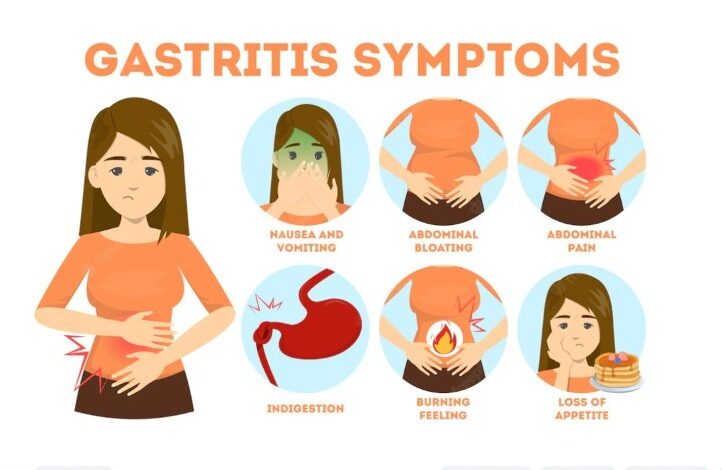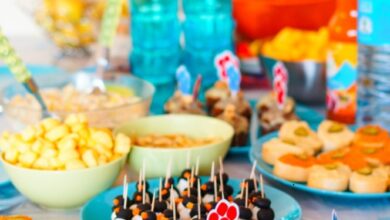Indian Diet Plan for Helicobacter Pylori Infection (Treatment of Gastritis Caused by Helicobacter Pylori)

Abdominal pain is very common in children. Most of the time it’s because of something they ate or unfiltered water. However, there are times when it often recurs and the reason is unknown. Similar symptoms can also occur in adults. One of the reasons for this can be H. Pylori infection. Indian diet plan for Helicobacter pylori infection. How to treat gastritis caused by Helicobacter Pylori?
Helicobacter pylori is a bacterium that causes inflammation in the inner lining of the stomach. It causes stomach ulcers and gastritis. Gastritis is the irritation of the stomach. In rare cases, if left untreated, it can lead to stomach cancer.
How to treat gastritis caused by Helicobacter Pylori?
Helicobacter pylori and gastritis
Helicobacter pylori cause the release of an enzyme called urease. This urease breaks down urea into ammonia. In addition, ammonia protects Helicobacter pylori from damage caused by stomach acid. Over time, Helicobacter pylori bacteria multiply and begin to corrode the inner lining of the stomach, causing inflammation.
Symptoms of Helicobacter pylori infection
Helicobacter pylori infection usually has no unusual symptoms. The symptoms that are manifested are due to gastritis or peptic ulcer disease. These symptoms are;
- Acute abdominal pain after eating
- Sudden weight loss
- Constant bloating
- Nausea and blood in the vomit
- indigestion
- Burp even on an empty stomach
- loss of appetite
- blood in the stool
How do you diagnose Helicobacter pylori infection?
In the absence of symptoms, it is generally difficult to diagnose Helicobacter pylori infection. But if gastritis recurs, doctors may suspect Helicobacter pylori infection.
- blood test: A Helicobacter pylori antibody test confirms Helicobacter pylori infection
- alcohol test: You will be given a specific solution to drink and asked to exhale in a bag. The amount of carbon dioxide confirms Helicobacter pylori infection. A high level of carbon dioxide in the breath confirms Helicobacter pylori infection.
- stool test: The stool is examined directly for Helicobacter pylori infestation
- endoscopy: An endoscopy of the upper abdomen is performed. The small tissue is sampled to test for Helicobacter pylori infection.
Treatment of gastritis caused by Helicobacter pylori
The golden rule in treating Helicobacter pylori is only treat if you have visible symptoms. Avoid over-the-counter antacids as they can increase your risk of developing stomach ulcers. Also, follow our sample Indian diet plan for H pylori infection. The treatments for Helicobacter pylori infections are;
- Antibiotics: Doctors usually prescribe antibiotics to get rid of Helicobacter pylori in combination with other treatment methods.
- Proton Pump Inhibitors: The proton pump inhibitors are used together with antibiotics to reduce gastric acid secretion. Less stomach acid helps reduce infections and prevent gastritis.
- Diet: Eat a diet that helps reduce excess acid secretion from the stomach. Choose foods that don’t cause hyperacidity, bloating, or indigestion and make symptoms worse. Avoid high-fat, refined carbohydrates and a high-protein diet. These foods aggravate acid secretion and increase the signs. Our example Indian diet plan for Helicobacter pylori infection will help you better understand the diet pattern.
Indian diet plan for Helicobacter pylori infection
Food for gastritis:
Eat easily digestible grains. Choose rice, broken wheat, whole grains, oats, quinoa, sama, and varai. Avoid eating millet frequently. Mix the millet flour with wheat flour to avoid bloating after consumption.
Choose from dals and split or whole legumes. Eat cooked sprouts instead of raw. Avoid large pulses like Rajma and Chole. Soak the legumes overnight to remove gas-causing substances and then cook them thoroughly to avoid acidification and gas.
These foods are high in omega-3 fatty acids, which help reduce inflammation in the lining of the stomach. Nuts also provide antioxidants that help heal faster. Add almonds, walnuts, dates, dried figs and apricots. Seeds such as flaxseed, chia seeds and pumpkin seeds are also rich in omega-3 fatty acids. Consume 1 or 2 teaspoons of these seeds for their benefits.
If the stomach lining is already inflamed, milk can cause bloating, indigestion and lack of exercise. Eat cottage cheese instead of milk. Cottage cheese provides lactic acid, which can help reduce excess acid secretion in the stomach. Buttermilk provides symptomatic relief from the burning sensation in the stomach. Cottage cheese and buttermilk also provide probiotics that help the gut recover faster.
Minimize consumption of fish and poultry to avoid excessive gastric acid secretion. Once consumed, cook in less oil and spices, steam or grill and avoid excess chili. A boiled egg a day is preferable as it is not only easy to digest but also nutrient dense and does not cause bloating.
Eat a low-fat diet. Balance your oil and ghee consumption according to the advice of nutritionists. Include only 2-3 teaspoons of visible fat in your daily diet.
Include water made from jeera, aniseed, barley or wheatgrass in your daily diet. It helps reduce acid secretion in the stomach.
Consume fresh fruit that is rich in antioxidants for faster healing. Consume cooked vegetables to avoid indigestion and bloating. Include 4-5 servings of fruits and vegetables in your daily diet.
Water helps neutralize the acid in the stomach. Drink water at regular intervals. Avoid drinking water with or immediately after meals to avoid bloating and indigestion.
Foods to avoid:
- Sugary Food: Excess sugar in foods leads to more acid production and also causes indigestion. Avoid desserts, sports drinks, sweets and refined sugars.
- Fried foods: Fried foods can cause bloating and loose movements. It can irritate the stomach lining and increase inflammation.
- Gas-causing foods: Foods like cauliflower, cabbage, soy, and legumes can cause gas and bloating as well. It is advisable to avoid such foods to avoid further irritation of the stomach lining.
Indian diet plan for Helicobacter pylori infection
Here is an example of the Indian diet plan for H pylori infection. This sample one day diet chart will give you a good idea of how to plan a menu of Indian diet plan for H pylori infection.
Sample meal plan
Empty Stomach: 1 glass of soaked jeera water (soaked overnight) or barley water with lemon juice + 10 soaked almonds
Breakfast: 1 cup of poha or upma + 1 glass of salted lassi
Morning: 1 seasonal fruit (100-150 g)
Having lunch: 1 cup cucumber raita + 1 cup cooked curds (mix mung dal + curds 1:1) + 1 cup vegetables
Evening: 1 cup oat upama + 1 cup buttermilk
Dinner: 1 cup of vegetable soup + 1 cup of dal khichdi + 1 bowl of cottage cheese
bedtime: Soaked nuts (2 almonds + 2 walnut halves + 1 date)
Final remark:
It is advisable to take immediate action against Helicobacter pylori infection to prevent further irreversible damage to the gastric mucosa. Proper nutrition, medication, as well as paying attention to symptoms will help you get rid of Helicobacter pylori infection. I hope this sample Indian diet plan for H pylori infection and information on how to treat gastritis caused by Helicobacter pylori will help you. You can also follow our low fodmap diet plan to get rid of IBS + gastritis symptoms fast.



